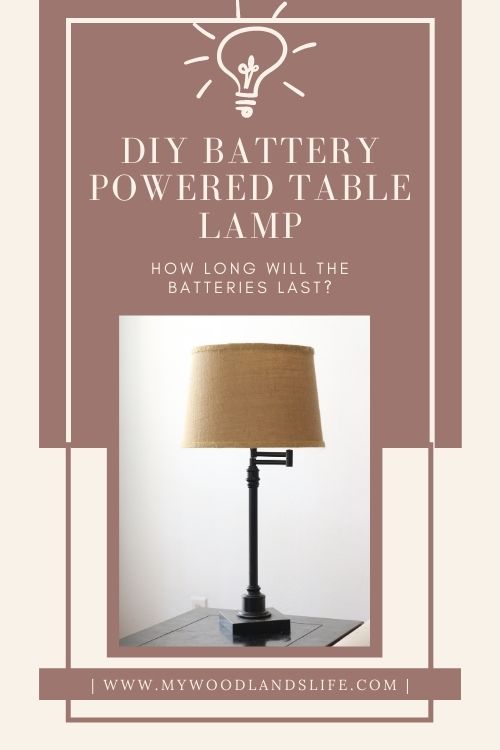
One of my more popular blog posts is How to Make a Battery-Powered Plug Receptacle. Since writing the post, I have received questions regarding battery life longevity, which is a valid concern considering the DIY receptacle uses eight AA batteries. I knew the post needed follow-up research. However, after I made the battery-powered plug receptacle and wrote the post, I quickly moved on to painting the house, Christmas, and all of that fun stuff. In the meantime, the kids did a number on my DIY project (more on that later).
Initial impressions of the battery-powered lamp
I was able to enjoy my “cordless” lamp for a few months before it stopped working. But I’m also not a big light user in the evening as I use mainly my phone for reading digital items. I would turn it on to read the occasional magazine or newspaper article. I liked that the light was available when I needed it, and I liked that the cord stayed tucked out of the way. The big question, though, is how long do the batteries last?
Nerd alert
If you want to see how I made the DIY battery powered plug receptacle for my table lamp, check out that post here. If you want to see which light bulbs work best in the battery powered lamp and why, keep on reading.
What follows is a break from my traditional blog posts that are full of paint, color and DIY projects. I promise I will get back to those soon. But to get to the bottom of the battery question we had to conduct an experiment to test different bulbs on the battery pack. My apologies if this post is a bit dense, but I feel it is helpful to explain why certain bulbs last longer than others. I’m not an engineer or electrician or anything, but Mr. L is pretty savvy when it comes to electronics. He (and Google) helped explain things to me.
The Test
We decided to run an experiment with different wattage LED light bulbs to test (1) battery longevity and (2) luminosity (whether the lights would be appropriately bright for reading at night).
Why different wattage light bulbs? Because lower watt bulbs use less energy and, in our case, less battery power.
And luminosity? The folks at energyrating.gov have a long explanation about why luminosity isn’t tied to wattage anymore with the advent of LED light bulbs. You can check that out here if you are interested. But the gist is that even low wattage LED bulbs can produce a good amount of light. In my experience, it’s best to test out your bulb to see if you like it.
Calculating Battery Life
There is a formula for determining battery life that is based on battery capacity and the current the device will be drawing from the battery (the light bulb in this case). I’ve set the formula out in the graphic below.
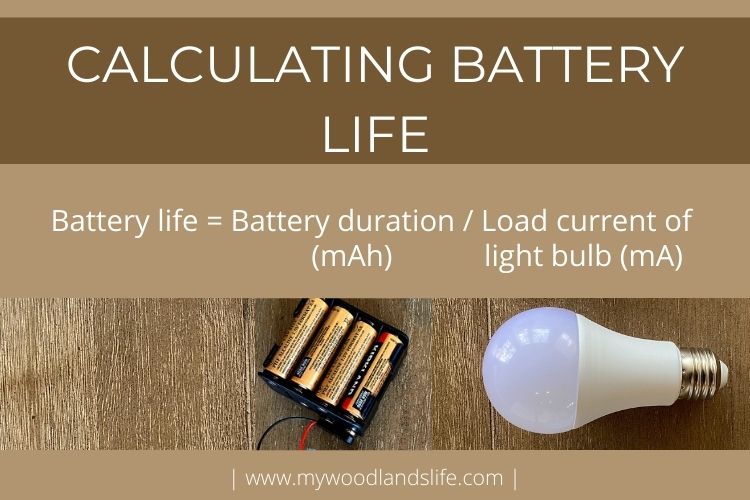
How do you calculate battery duration? You may recall that the battery pack I used to power the plug receptacle for the lamp holds eight batteries in series. In ideal conditions, each AA battery is rated for 2000 mA hours (mAh) at 1.5V. In other words, a single battery can produce 2000 mA of current for an hour. Accordingly, eight AA batteries in a series provides approximately 2000 mA hours at 12V (8 batteries x 1.5V = 12V). So 2000 mAh is the “top” number of the formula.
How do you find out the load current of the light bulb? The load current of the light bulb is the wattage of the light bulb divided by the operational voltage of the light bulb (in this case 12V). When you go online to order 12V LED bulbs bulbs, most list the wattage and you’ll sometimes see its current rating in milliamps (mA). The mA value can also be found (but not always) on the stem of the bulb, as is the case with the 10.6 watt bulb I originally purchased for the lamp:
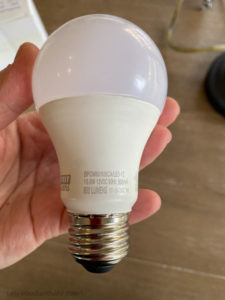
As an example of calculating the actual load current based on wattage, the 10.6 watt bulb has a load current of 10.6 watts divided by 12V. Multiply that number by 1000 to get 883 mA. So 883 mA would be the “bottom” number of the formula for the 10.6 watt bulb. The bottom number obviously varies depending on the mA rating of the LED light bulb.
Battery Life of Different Wattage Bulbs Under Ideal Conditions: Based on the formula, the following table lists how long different watt bulbs should last with the battery pack in an ideal setting. I based the wattage values off of the different watt 12V LED light bulbs that are generally available on Amazon.

Materials
With the info above, I knew my 10.6 watt bulb should ideally last for 2.3 hours, a 7 watt bulb for 3.4 hours and so on.
But would the Amazon bulbs live up to the formula? That’s where the experiment came into play.
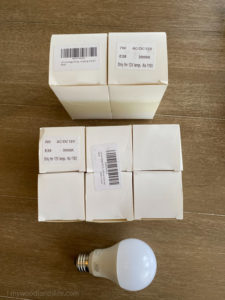
Lightbulbs. I ordered three different watt lightbulbs from Amazon mainly because I wanted to get a feel for the luminosity of each bulb. Spoiler alert: I had no idea their actual run time would be so “off” from the expected run time. I already had the 10.6 watt bulb (linked here). I also ordered a package of 7 watt bulbs (linked here) and 3 watt bulbs (linked here).
New 8-slot battery pack. The battery pack I originally purchased (linked here) was out of stock so ordered a four pack (linked here).
Outlet receptacle. You can buy these pretty much anywhere. An Amazon link is here.
Batteries. We used Kirkland-brand alkaline batteries.
Lamp. I originally made the mistake of connecting the battery pack to a 3-way table lamp. Three way lamps are designed to work with a three-way bulb. Current is always being drawn from the bulb so long as the switch is not in the “off” position. With the LED, the bulb did not turn on in all three positions. But the battery would continue to drain unless the switch was in the “off” position. Unfortunately, the kids would play with the switch and leave it “on” without without our knowing. Long story short, they ran down the battery and then the battery pack corroded because the light bulb was slowly drawing current from the batteries in the non-lit position. This time I used a regular ol’ lamp.
Procedure
I’m not going to go into a lot of detail here, but this was our general procedure:
- We used new alkaline batteries for each test on the three different bulbs.
- For each wattage bulb, we plugged the lamp in, started a timer and did our best to keep track of when the lamp turned off (i.e., when the batteries ran out).
- We recorded our findings.
I’m going to be up front and admit that our procedure was not super high quality. Mr. L works full time and I’m constantly chasing after kids, so we did our best to monitor the light. In the case in which we didn’t see the light turn off, we rounded down to the last time we saw it on. But we were within a 30 minute time period.
Observations
I’m a visual person, so here’s another chart showing how long each bulb actually lasted. I will note again that this is all approximate because of our “procedure” mentioned above.
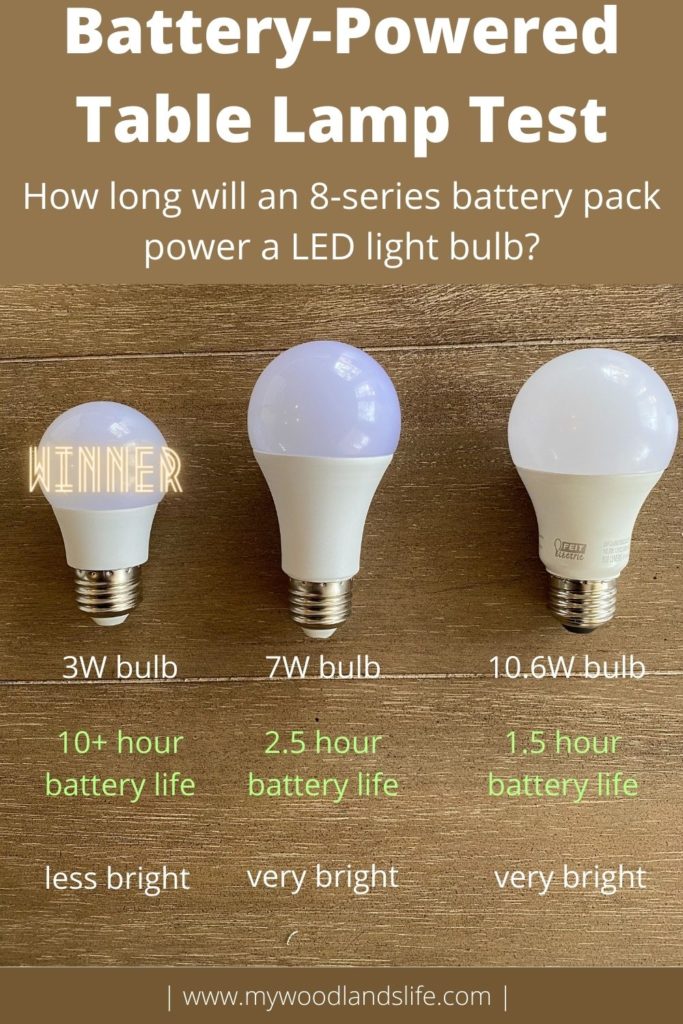
Analysis/Conclusions
To start, I was surprised by the significant difference between the expected life of the batteries and the actual real-world life of the batteries.
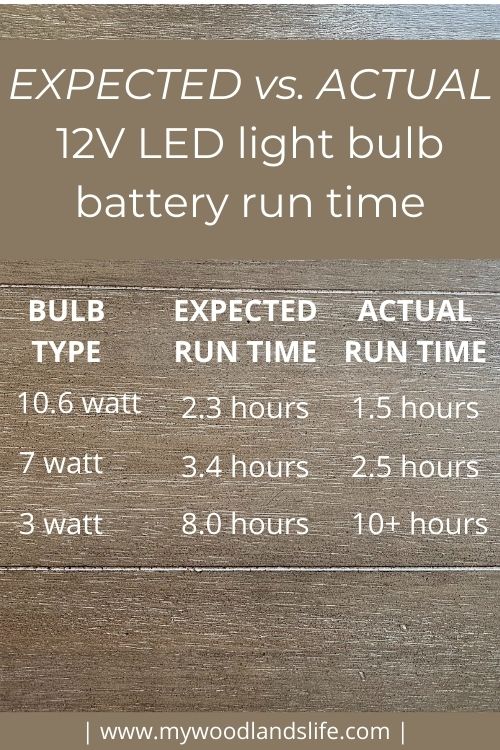
The 10.6 watt bulb: The 10.6 watt bulb was the most disappointing. Under ideal conditions (which generally means “room temperature”), it should have lasted an entire hour longer than it actually did. I don’t really have a great explanation for why it didn’t last very long.
As I mentioned, I originally used the 10.6 watt bulb in my table lamp when I set this entire thing up. It worked for me because I used the lamp so infrequently. But the 10.6 watt bulb may not be a practical choice for someone who wants to use the lamp often.
The 7 watt bulb: The 7 watt bulb was the most surprising because its actual runtime on the battery pack was waaay off. It really should have lasted a lot longer.
The 3 watt bulb : The little 3 watt bulb was the workhorse in this test. Amazingly it exceeded its expected run time on the battery pack. As for brightness, the 3 watt bulb is sufficient for my use of the lamp. I could use it to read in a dark room, but thanks to LASIK I also have perfect eyesight. The 3 watt bulb is admittedly not as bright as the higher-wattage bulbs. I recommend testing it out to see if the bulb works for you (Amazon link here):

Other options: I didn’t want to spend a fortune on light bulbs for this test, so I tried to get good coverage on the wattage spectrum by ordering the 7 watt and 3 watt bulbs. Amazon does carry different wattage 12V bulbs, so it may be worth checking those out.
Final Thoughts
In conclusion, I’m happy to report that the DIY battery-powered plug receptacle is a good project for anyone who needs a decent light in the evenings–but intermittently. If you plan to use the lamp a lot, I recommend investing in some rechargeable batteries and the 3 watt bulb. If you want to use the lamp for reading fine print every night, this may not be an ideal solution for you (or try out a different lower-wattage bulb).


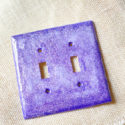


Leave a Reply